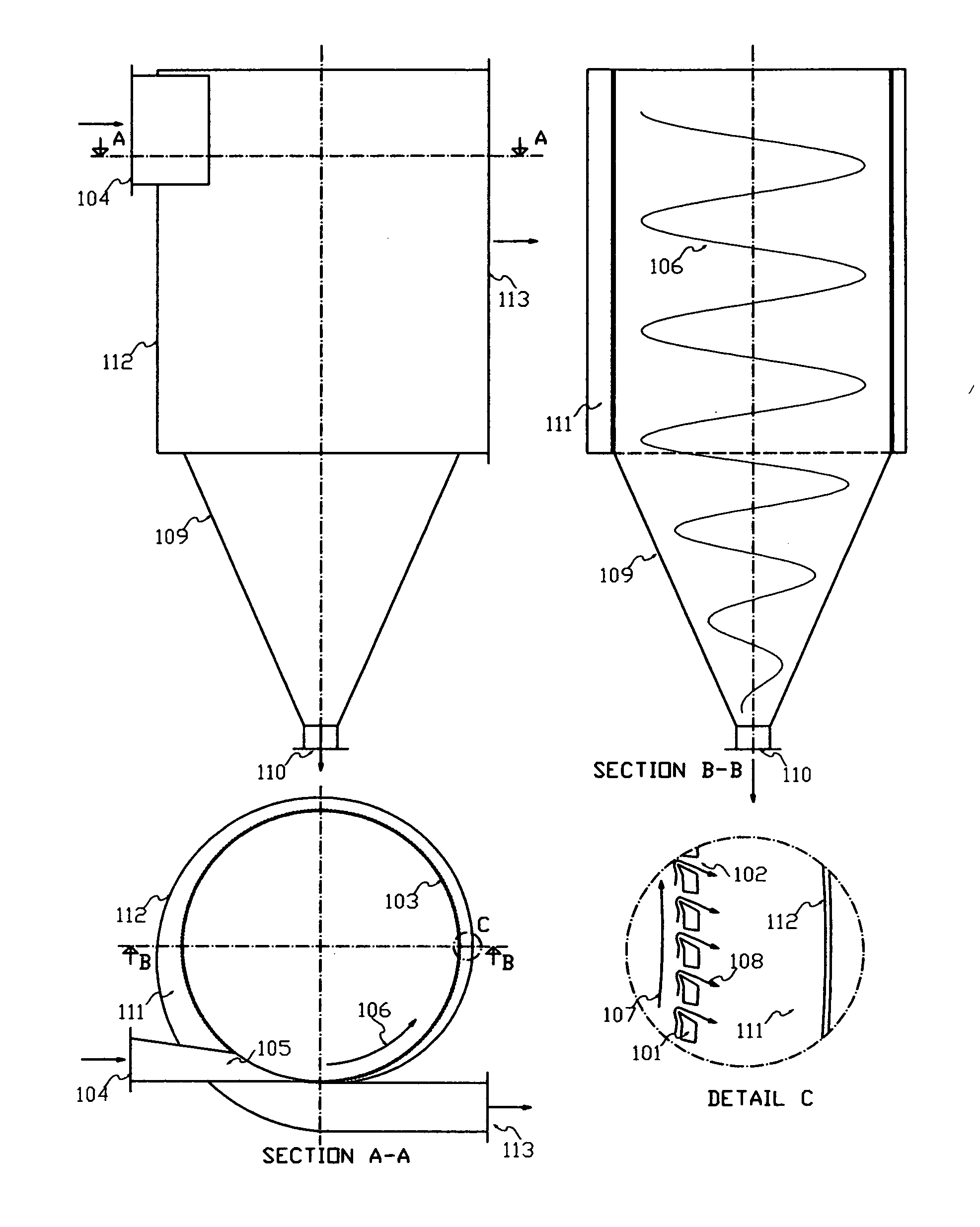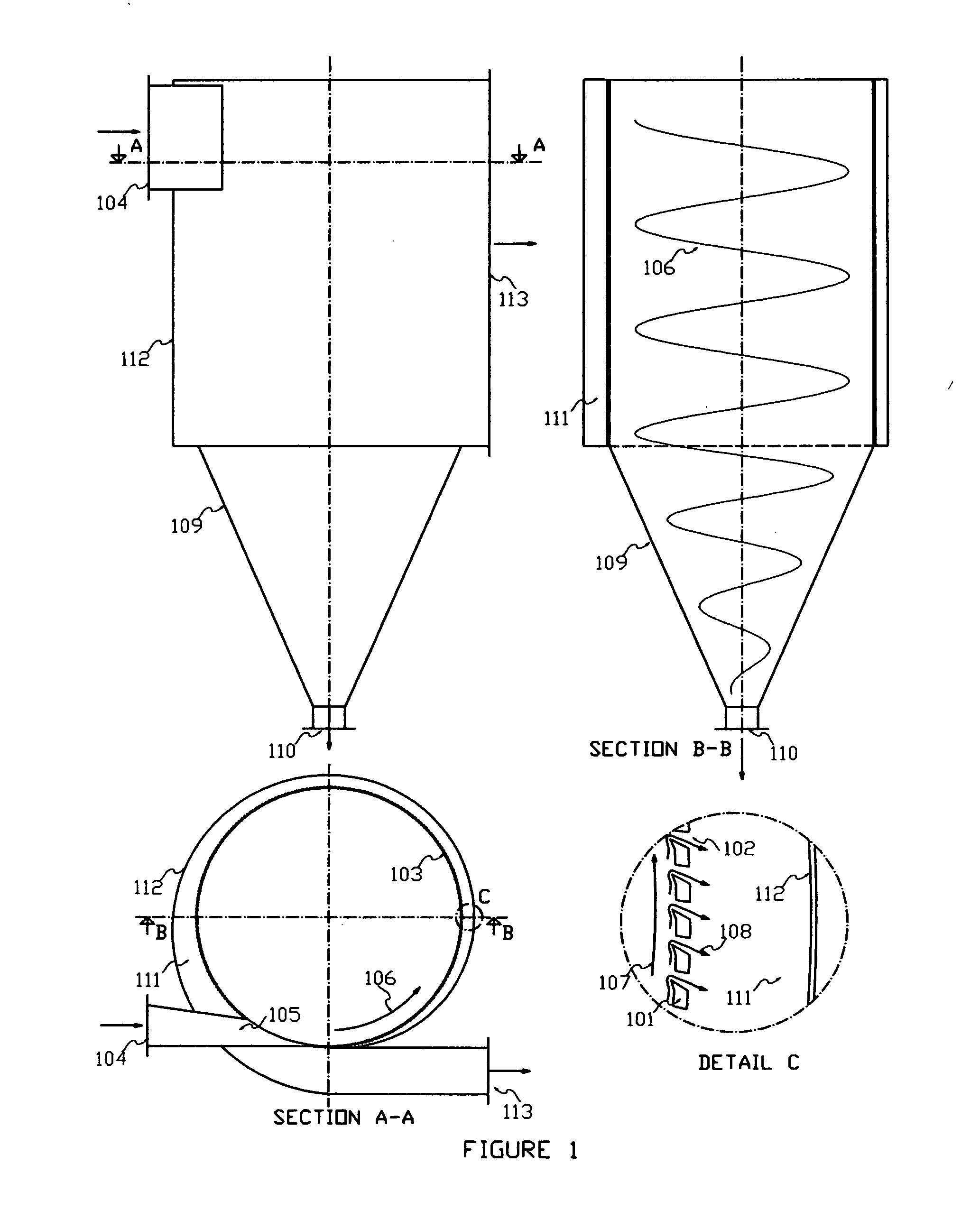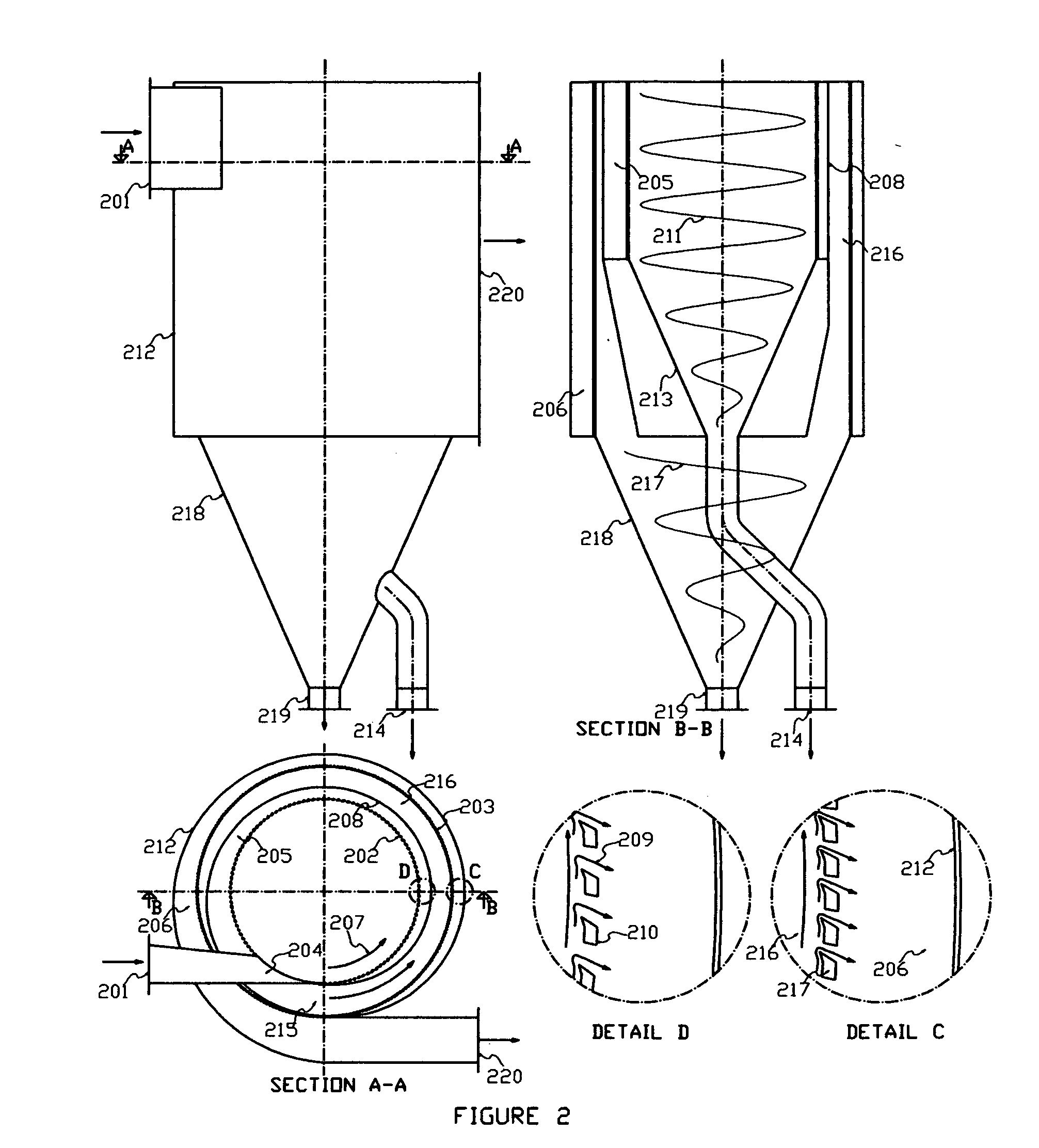Cyclone induced sweeping flow separator
a flow separator and cyclone technology, applied in the field ofinertial separation, can solve the problems of limited efficiency and limited minimum streamline curvature of current cyclone technology, and achieve the effect of facilitating the formation of sharply curved streamlines, effective inertial separation of particles, and high acceleration
- Summary
- Abstract
- Description
- Claims
- Application Information
AI Technical Summary
Benefits of technology
Problems solved by technology
Method used
Image
Examples
Embodiment Construction
[0017]Referring now to the drawings, in which like numerals indicate like elements, FIG. 1 shows cross sectional views and details of one preferred embodiment of the cyclone induced sweeping flow separator screen. Multitude of parallel, asymmetrically profiled linear elements 101 are evenly spaced, separated by gaps 102 to form the linear grid of the cylindrical or slightly conical face of the separator-screen 103. The mixed flow of fluid (gas or liquid) and particles enters the apparatus through the inlet port 104 at the top portion of the device. The inlet nozzle 105 accelerates and directs the flow tangentially to the face of the screen. This tangential entry generates a spinning, rotating, swirling motion of the fluid 106 inside the separator-screen that is also referred as cyclone effect. The rotating fluid sweeps the cylindrical face of the screen perpendicularly crossing 107 its linear grid elements 101. Some of the fluid will pass through the gaps of the separator screen, wi...
PUM
| Property | Measurement | Unit |
|---|---|---|
| gap-size | aaaaa | aaaaa |
| width size | aaaaa | aaaaa |
| velocity | aaaaa | aaaaa |
Abstract
Description
Claims
Application Information
 Login to View More
Login to View More - R&D
- Intellectual Property
- Life Sciences
- Materials
- Tech Scout
- Unparalleled Data Quality
- Higher Quality Content
- 60% Fewer Hallucinations
Browse by: Latest US Patents, China's latest patents, Technical Efficacy Thesaurus, Application Domain, Technology Topic, Popular Technical Reports.
© 2025 PatSnap. All rights reserved.Legal|Privacy policy|Modern Slavery Act Transparency Statement|Sitemap|About US| Contact US: help@patsnap.com



